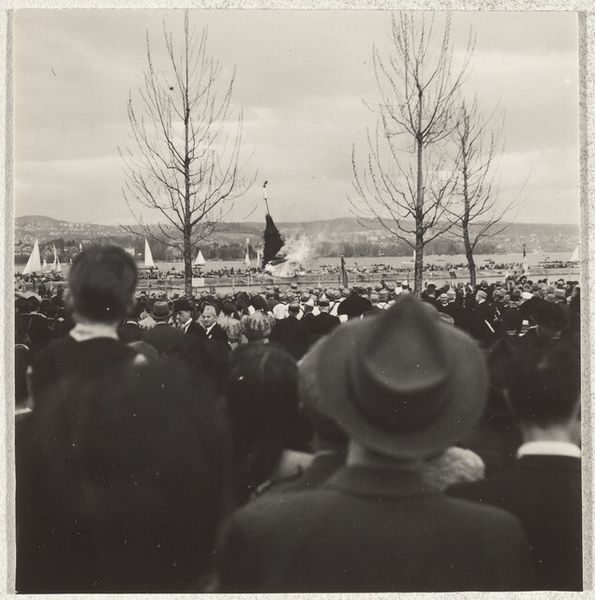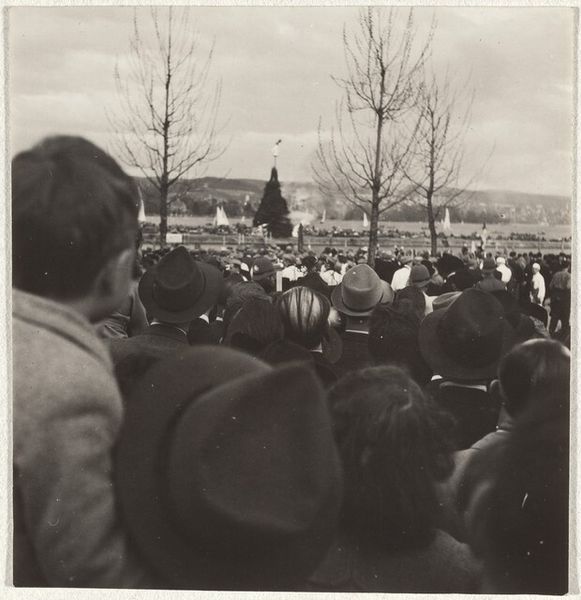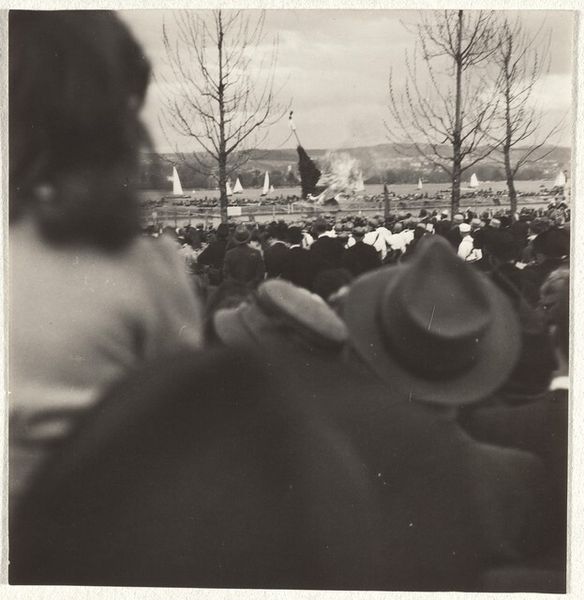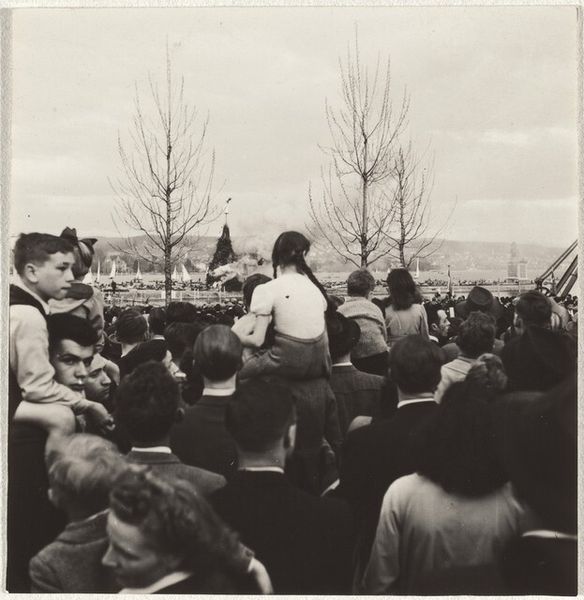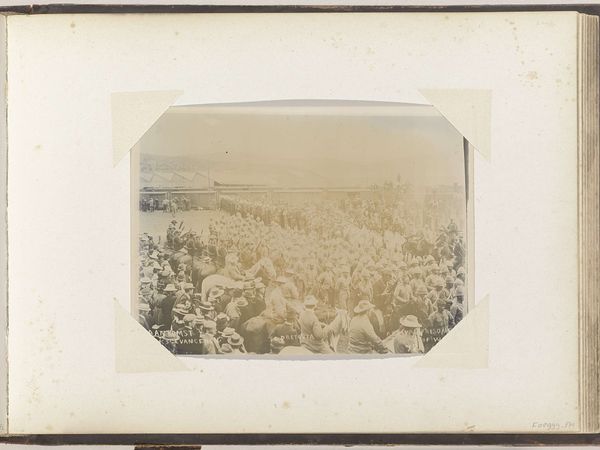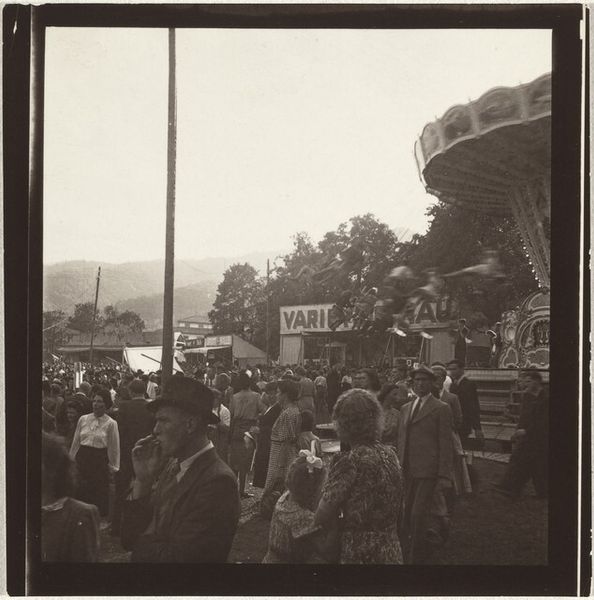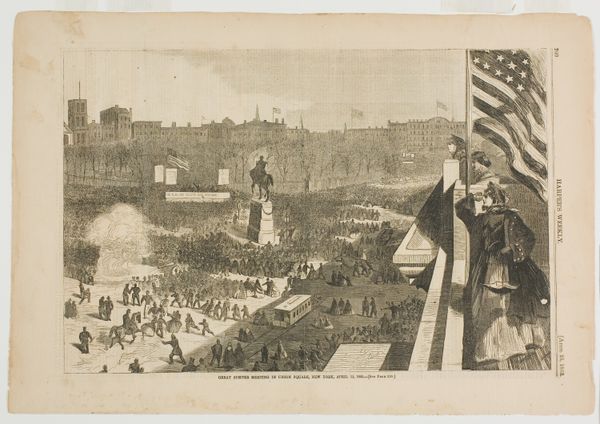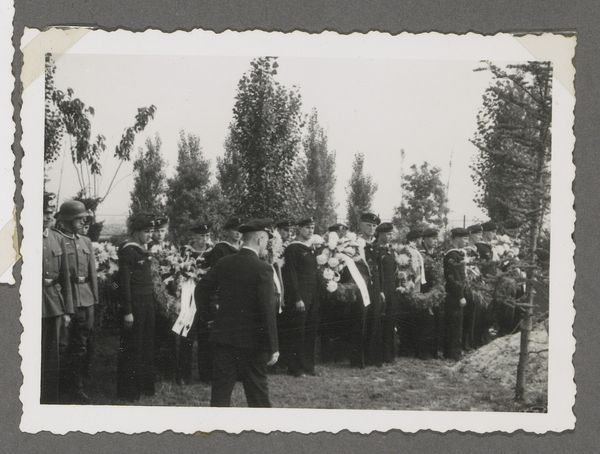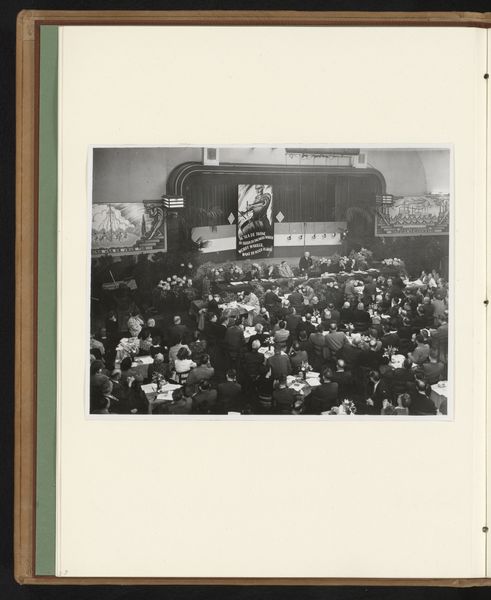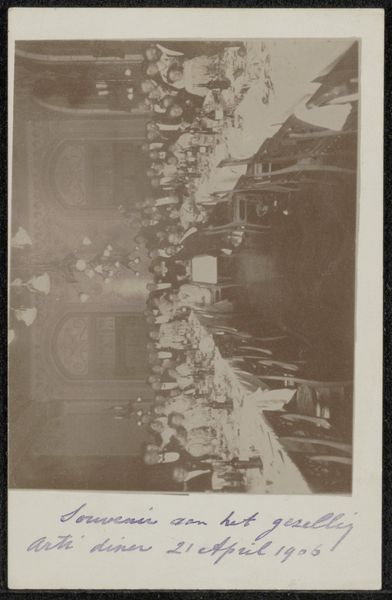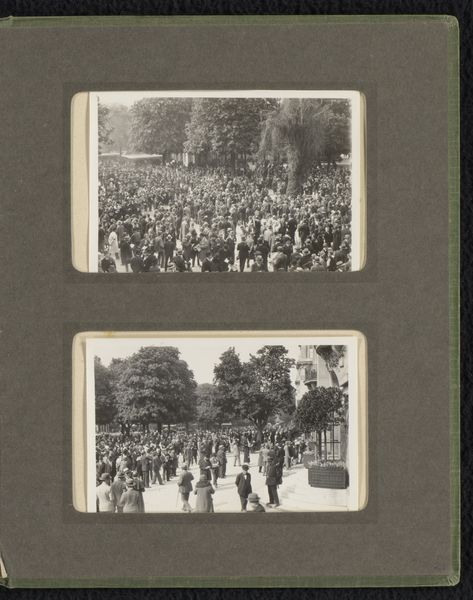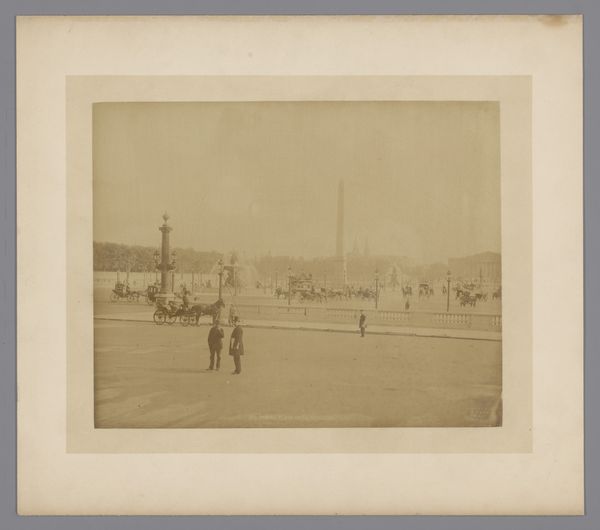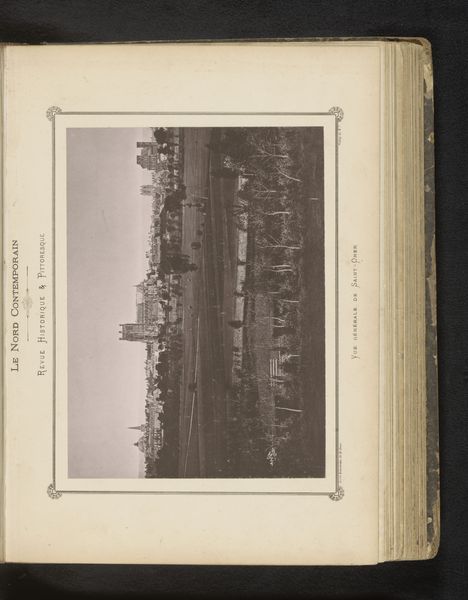
Dimensions: image: 23 x 13.3 cm (9 1/16 x 5 1/4 in.) sheet: 23 x 17.2 cm (9 1/16 x 6 3/4 in.)
Copyright: National Gallery of Art: CC0 1.0
Curator: Looking at Robert Frank's gelatin silver print, "40 Fotos, page 13", dating to 1946, I am struck by the way it captures the feeling of an anonymous crowd. There's a dense mass of figures, mostly seen from behind. Editor: My initial sense is somber. The grey tones and the sheer number of heads evoke a sort of post-war austerity and a feeling of communal observation. The materiality of the gelatin silver—its specific tonality—plays into this mood, almost like a historical document. Curator: Absolutely. Note how Frank uses framing. We're positioned almost within the crowd, yet distanced. Two barren trees act as vertical anchors, directing our gaze to a distant scene playing out with what appears to be a large fire or display. The formal composition contributes significantly to that sense of detachment. Editor: From my perspective, the materials themselves are evocative. The gelatin silver printing process – requiring specific labor, expertise, and resources – implicates this image in the socio-economic context of photography itself. The image speaks of reproduction and dissemination. The repetitive presence of hats draws me in and suggests class consciousness, manual labor, and shared viewing habits. It makes me think of what's happening in this location during a post-war period. Curator: You’re pointing to the material circumstances. I’m interested, too, in the ambiguity it creates. What are these people watching? A celebration? A somber act of destruction? The visual elements become semiotic markers pointing to a larger unknown, typical of Post-Impressionist visual style. Editor: Exactly, the image prompts us to reflect on photographic consumption. Who can afford to take these pictures, reproduce them, look at them? What structures facilitate their production and our gaze? That ambiguity is rooted in material accessibility. Curator: Yes, and perhaps Frank is inviting us to ponder the nature of spectatorship itself. We, like the crowd, are observing from a distance, interpreting based on fragmented visual information. It becomes a commentary on our limited understanding. Editor: The materiality argues that we aren't objective observers. The social relations and access implicit in the photographic process predetermine who and how an event like this gets viewed, remembered, and, thus, what story gets told. Curator: In short, Robert Frank's work, viewed through both lenses, offers much more than a simple snapshot. It becomes an invitation for critical self-reflection. Editor: Agreed. It shows how materials, context, and aesthetic vision can intertwine to spark profound questions.
Comments
No comments
Be the first to comment and join the conversation on the ultimate creative platform.
